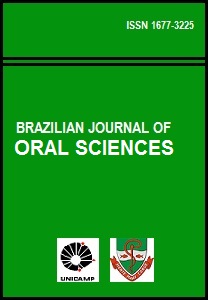Abstract
Aim: To describe the prevalence of periodontal disease in the indigenous population of the Middle and Lower Xingu compared to the non-indigenous Brazilian population. Methods: The evaluated indigenous population of the Xingu Reserve had oral and dental examinations performed by calibrated examiners assisted by Oral Health Indigenous Agents. From a sample of 2,299 indigenous subjects, epidemiological investigations were conducted in 1,911 individuals, using the methodology recommended by the World Health Organization. Comparative periodontal data from the nonindigenous population were obtained from the Brazilian Ministry of Health’s national epidemiological survey on oral health conditions (“SB Brasil” project). The periodontal data of 508 indigenous individuals were presented by age intervals of 15-19 (n=219), 35-44 (n=128) and 65-74 (n=161) years. Results: In the non-indigenous population, the periodontally healthy individuals were 46.2%, 21.9% and 7.9% for each age group, respectively, and in the Xingu population they were 28.76%, 3.12% and 0% for each age group, respectively. The most frequent finding in the Xingu population was the presence of calculus in 62.55% of younger people, 82.03% of adults and 45.45% of the elderly. The analysis by sextants demonstrated the presence of calculus in 25.04%, 44.79% and 18.18% for young, adults and elderly respectively. Conclusions: Despite the higher prevalence of calculus, in all age groups of the indigenous population, tooth loss does not seem to follow the same pattern observed in the non-indigenous Brazilian population, suggesting differences in susceptibility, habits or conditions.The Brazilian Journal of Oral Sciences uses the Creative Commons license (CC), thus preserving the integrity of the articles in an open access environment.
Downloads
Download data is not yet available.

